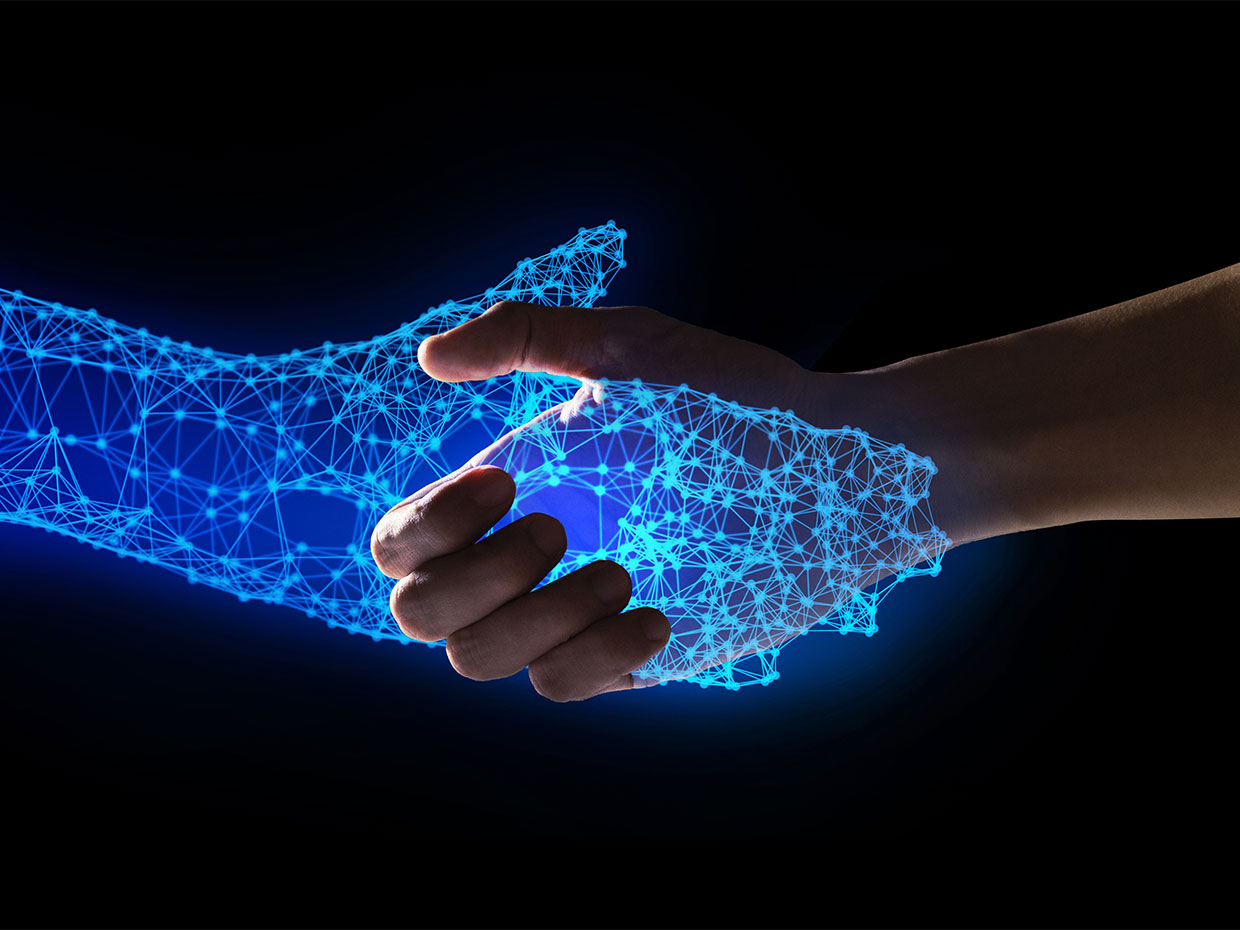
Transhumanism: Where Physical and Digital Worlds Meld
New whitepaper explains how augmented machines and augmented humans will represent physical reality
By Kathy Pretz, IEEE Spectrum

Illustration: iStockphoto
THE INSTITUTE Transhumanists say someday technology will dramatically enhance human intellect and physiology. That day might arrive sooner than we think.
People are already leveraging machines to improve their well-being and athletic performance and to extend their knowledge. Think fitness trackers, exoskeletons, and artificial intelligence.
In the “Augmented Machines and Augmented Humans Converging on Transhumanism” white paper, IEEE Senior Member Roberto Saracco describes how the transition is taking place through increased intelligence of machines, improved communications methods, and technologies that are being used to augment humans.
Saracco is co-chair of the IEEE Digital Reality Initiative, which seeks to advance artificial intelligence, augmented reality, machine learning, smart sensors, virtual reality, and related technologies.
“Through the transhumanism, cyberspace and physical reality will be our perceived reality,” he says. “Human augmentation and machine augmentation are converging, creating a new symbiotic creature.”
Here are highlights from the white paper, which was released in June.
DIGITAL TWINS
One phenomenon that is driving a transformation of the intersection between humans and technology is the creation of digital twins: virtual models of objects, processes, and large systems. Digital twins can be created from anything physical that is wired for data with sensors, including you and me.
As sensor coverage and analytics have improved, digital twins are able to better match the characteristics and behavior of their real-world counterpart, in many cases responding to changes as the real thing would.
Think of them as clones. Every time the original version gets updated, so does the twin. A high-fidelity twin can remain in sync with the physical entity as sensors detect changes. A good digital twin has the ability to shadow the evolution of its physical twin.
Saracco envisions physical and digital twins becoming even more closely linked. “The boundary between humans and machines will become fuzzier and fuzzier, leading to a fusion between a digital twin and its physical twin,” he writes. “The resulting reality, the one that we will perceive, will exist partially in the physical world and partly in cyberspace.”
SMARTER MACHINES
Saracco says there are four types of intelligence that can make machines smarter by taking advantage of digital twins: embedded, shared, collective, and emerging. He uses self-driving cars to explain his point.
Embedded processing capabilities can enhance both the physical twin as well as its digital counterpart. For self-driving cars, that can include providing the vehicle with awareness and understanding of its surroundings.
Intelligence also can be pooled. Thanks to sensors that allow vehicle-to-vehicle communication among autonomous cars, the vehicles will be able to navigate more safely because they will share information with each other, Saracco says.
As with bee colonies, the links and interactions between individuals can give rise to emerging intelligence. For autonomous cars, Saracco says, each one might follow a few basic rules of the road, but as a result of their mutually influencing behavior, they could ultimately improve the flow of traffic as an ensemble.
Machines will gain awareness by learning how to deal with situations, Saracco says, adding that eventually they also will be able to predict how the situations will evolve. For example, he says, some machines could sense the emotional states of people in a crowd by observing their faces and behavior.
“In this sense,” he writes, “we can say that a machine can read our mind.”
As robots and other machines become more software-driven, they will be able to adapt to situations and change their behavior accordingly, he says.
When robots eventually reach a higher level of intelligence and start to understand how humans react to specific situations, the machines will begin to influence their surroundings in a way that’s most beneficial to the robots, he predicts.
AUGMENTING HUMANS
People today are enhancing their physical performance with exoskeletons and smart glasses, and Saracco envisions further extensions of our physical and mental abilities.
Future advances in prosthetics, for example, will enhance specific features, like heightening our senses, he predicts.
“Smart prosthetics are becoming so seamless that they are no longer considered artificial parts,” he says. “The brain includes them in the body map.”
Medical implants that monitor our health will become more common as medicine is customized to the patient, he says, and eventually it will be difficult for people to live without the implants.
“Having an implant seamlessly connecting to cyberspace may become a competitive advantage, quickly leading to mass adoption,” Saracco says. “Our cognitive space will extend into cyberspace through a medical implant, a continuum where it will be impossible to separate the cognitive self from the extended self. In the coming decade, the relationship between cyberspace will become seamless, a sort of sixth sense.”
Ethical concerns are likely to arise, he says, adding that it’s important to consider the consequences.
This article appeared first at IEEE Spectrum | The Institute on Oct 3, 2019.
No Comments




